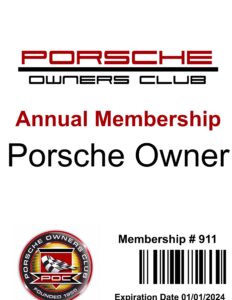
PASSING RESPONSIBILITY
9.2 PASSING RESPONSIBILITY
The overtaking driver and the driver in the lead share responsibility for a safe interaction. The overtaking driver must realize that they have an advantage over the driver in the lead: the overtaking driver has a better view of the car in the lead than the driver of the lead car has of the overtaking car. However, the driver of the car in the lead has an obligation to remain aware of passing vehicles and leave racing room as described below.
On a straightaway, the driver in the lead may proceed in a straight line at any position on the track but shall not attempt to block or impede the progress of passing car(s); weaving is not permitted. When approaching a corner, the car in the lead is permitted one defensive move but such a move must not be reactionary or so late as to create a danger to the following car. Such blocking behavior may result in a black flag penalty, regardless of whether there is contact or not.
If a car establishes full position (front bumper at, or in front of, the door mirror of the car in the lead), at or before the turn-in point, the cars must share the corner. They coexist and give racing room to each other. In the absence of extenuating circumstances, a driver in the lead who fails to leave racing room in such a situation will likely be assigned major responsibility for any contact. However, the overtaking driver is still required to take evasive action to avoid contact where possible. Failure to do so may result in assignment of partial responsibility.
If a car establishes partial position (front bumper breaks the plane of the rear bumper of the lead car, but not its door mirror) at or before the turn-in point, then the lead driver is similarly required to leave racing room, if possible. Most corners and most situations allow for coexistence when the overtaking car has established reasonable, but not complete position. However, the overtaking driver is responsible to know which corners and which situations are reasonable for coexistence and which are not. The overtaking driver must be ready to back out if necessary to avoid contact. While the major responsibility for avoiding contact lies with the overtaking car in such circumstances, partial responsibility may also be assigned to lead drivers for failure to leave room where it is possible to do so. Failure to recognize that overlap was attained is not an acceptable defense – if in doubt, leave room.
Drivers who repeatedly fail to leave racing room when being passed, or who repeatedly exhibit blocking behavior, will be penalized, regardless of whether contact is made. This may take the form of race disqualification, write-up, or a 13/13, at the discretion of the Competition Committee.
9.2.1 A pass is defined as being completed when the front bumper of the overtaking car breaks the plane of the front bumper of the overtaken car. At that point, the overtaking car becomes the lead car and responsibilities described above are reversed.
9.2.2 Overtaking drivers that “dive” into a corner late, after the turn- in point, will likely be held responsible for any incident, regardless of whether or not the overtaking car’s front bumper broke the plane of the front bumper of the overtaken car, before contact was made.
9.2.3 All overtaking drivers shall approach the car to be overtaken in a safe and reasonable manner by maintaining a safe distance while executing a pass. All drivers must be cautious of multiple car passes as the driver being passed may not see additional cars hidden from view behind the first passing car.
9.2.4 If a slower car is being lapped or passed by faster traffic, it is courteous for the driver in the slower car to point the faster cars by and give racing room in the corners. The overtaking driver must be cautious and understand the potential risk of the slower driver not seeing him or misjudging the speed differential. The overtaking driver must realize that without a “point by” he is ultimately responsible for the safe pass of slow or lapped traffic.
9.3 RACE STARTS
9.3.1 Forming up. Rolling starts, two-abreast, are the norm for POC races and may be split; i.e. two or more groups may start in a staggered fashion. The pole-sitter of each group may choose the inside or outside position upon entering the track for the warm-up lap. All other cars form up according to the pole-sitter’s choice i.e. P3 will start behind P1, P4 behind P2 etc.
9.3.2 Approaching the start. Two corners before the start line the pole-sitter shall slow down sufficiently to allow cars to form up into position and then establish a starting speed (between 40 and 60 mph), and maintain that chosen speed on the approach to the start-finish line. No weaving or tire scrubbing once your group forms up. All other cars should adjust their speed accordingly to maintain formation behind the two lead cars with approximately one car-length separation between rows. Excessive acceleration and/or deceleration ahead of the green flag being waved, including ‘jumping the start’, or not staying in line, may result in a restart being called and/or a black flag for the offender(s), at the discretion of the Race Director. Other penalties (e.g. write-up, 1-lap penalty, DQ) may be issued after the race, subsequent to protest, at the discretion of the Competition Committee.
9.3.3 Approaching the first corner. This is a time of particularly high-risk for collision as multiple cars attempt to establish position in close proximity to one another. It is imperative that drivers be aware of cars around them and leave sufficient racing room. The “shared responsibility” mantra described in the passing rules above will be key in decisions made by the Competition Committee in these situations. If in doubt, leave room.


